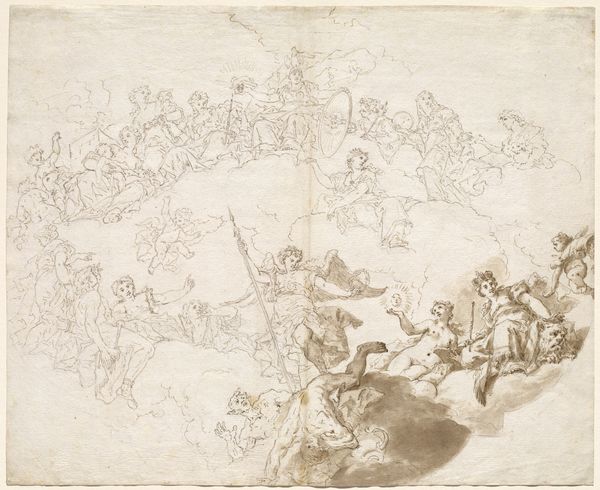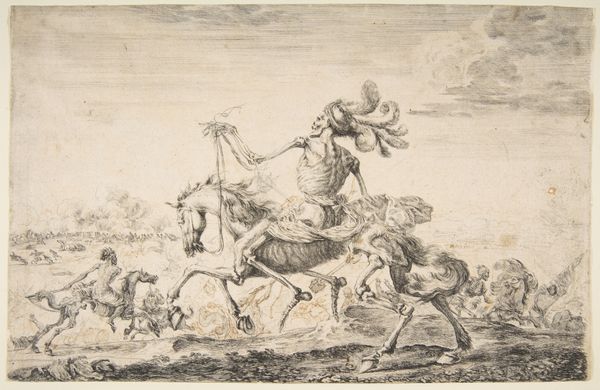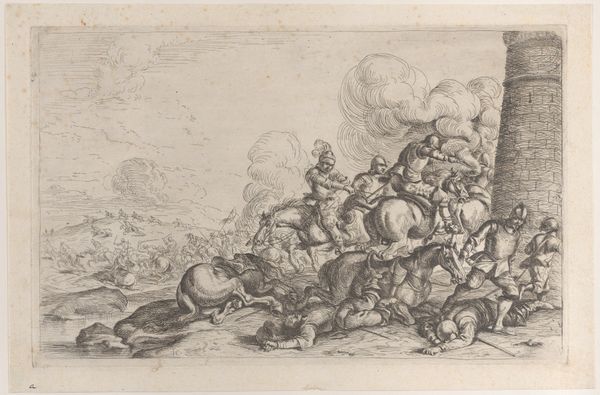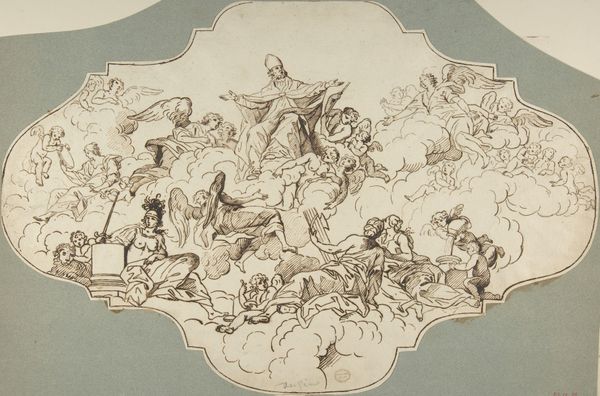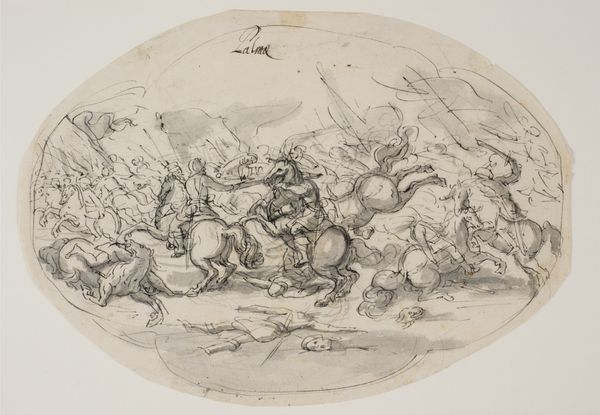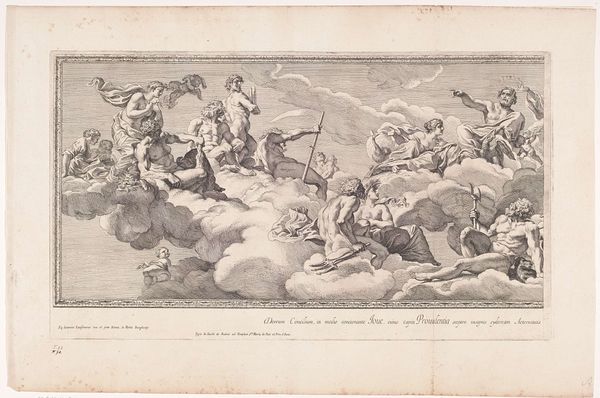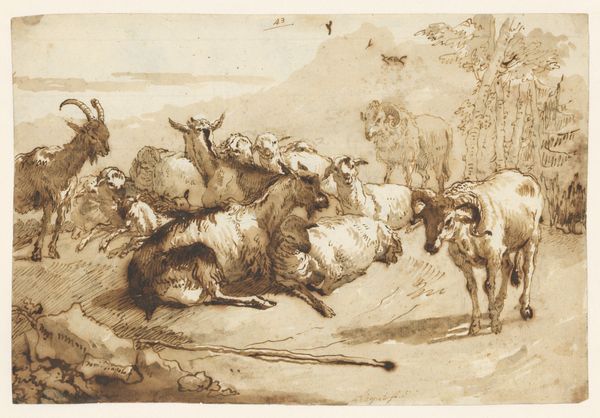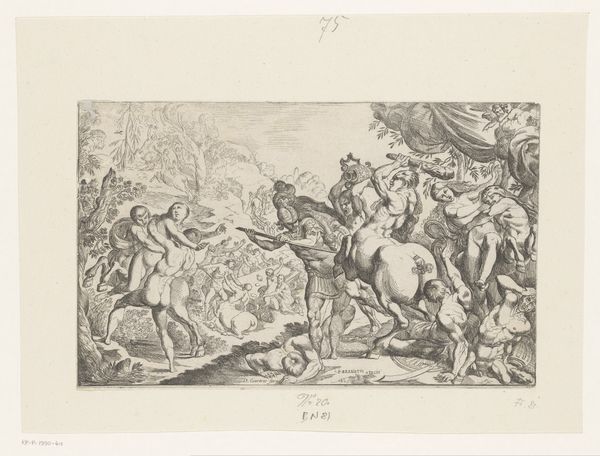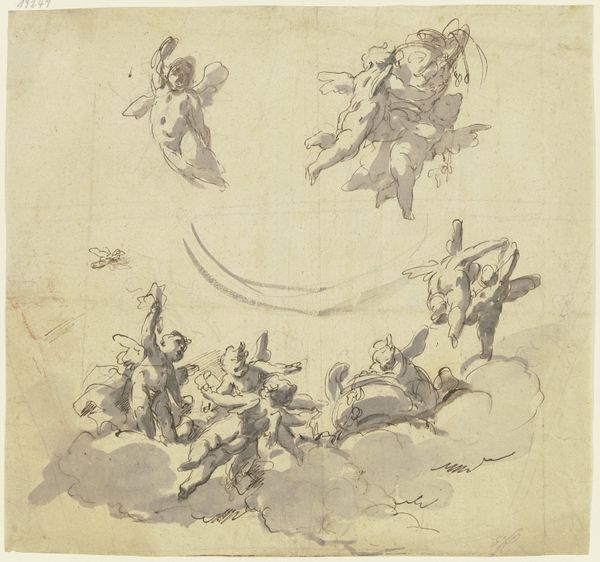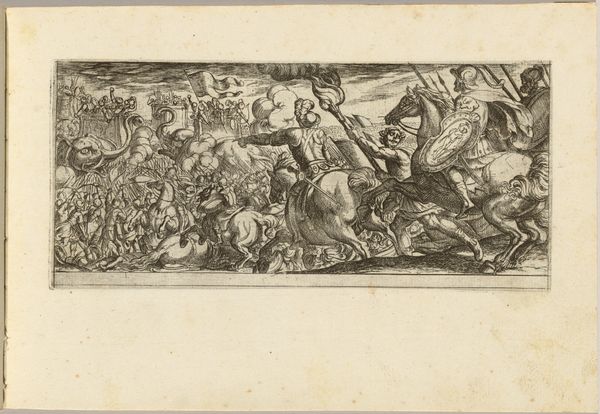
drawing, mixed-media, print, paper, ink, pencil, chalk
#
drawing
#
mixed-media
#
allegory
#
baroque
# print
#
pencil sketch
#
landscape
#
classical-realism
#
figuration
#
paper
#
ink
#
pencil
#
chalk
#
history-painting
#
mixed media
Dimensions: 202 × 315 mm
Copyright: Public Domain
Curator: Domenico Mondo, the artist responsible for this artwork, worked sometime during the 18th century. It is held in the collection of the Art Institute of Chicago, and it is entitled "Apotheosis of a Hero." It's rendered in mixed media, incorporating ink, chalk, and pencil on paper. Editor: It feels light, almost airy. A wash of earthy tones, various greys and browns. And busy! My eye doesn't quite know where to land first, it is teeming with figures rising towards something in the clouds. Curator: Mondo was indeed working in the Baroque style, although it's infused with classical realism here. These idealized bodies and dynamic compositions were meant to elevate a narrative, making history painting grand and accessible. "Apotheosis," in this context, implies the glorification of a hero, raising him to godlike status. It would have been a spectacle! Editor: Yes, there's a definite theatrical quality to it, like set design perhaps, even down to the paper's appearance—raw, almost aged. One sees pencil and chalk smudges near the borders. I'm interested in what paper types artists during the baroque period had access to and how that impacted the immediacy of sketches like this. Curator: The social function is key here. These images often had powerful patrons behind them, people whose legacies needed solidifying. While we don't know who specifically this work depicts, it functions as a propaganda tool, albeit beautiful propaganda. The museum plays an important role in preserving not just the object but its ability to inform social history. Editor: Right, the hero is almost secondary; this is very much about crafting a visually arresting statement using the human body and dramatic composition, like stagecraft. You see these incredible figures emerging from swirling clouds, powerful horses pulling a chariot. What choices did Mondo have when picking and mixing media for this work? Curator: That question is best looked at through the lens of access. Artists in this era depended greatly on academies and access to certain materials granted by powerful allies, allowing for the perpetuation of classical idealism and historical paintings with moralizing agendas. Editor: So even materials carry their own form of cultural capital. Fascinating. I am just drawn to the tangible quality here— the deliberate chalk work in the billowing cloudscapes, how it contrasts the very precise linework in the hero’s face. The blending seems really calculated, almost to reinforce a type of celestial production. Curator: A great summary. Indeed, reflecting on Mondo’s techniques provides insightful interpretations about artistic influence. Editor: Precisely, Domenico Mondo invites us to reconsider historical artmaking through tangible acts and materials rather than passively accept narratives of historical record.
Comments
No comments
Be the first to comment and join the conversation on the ultimate creative platform.
